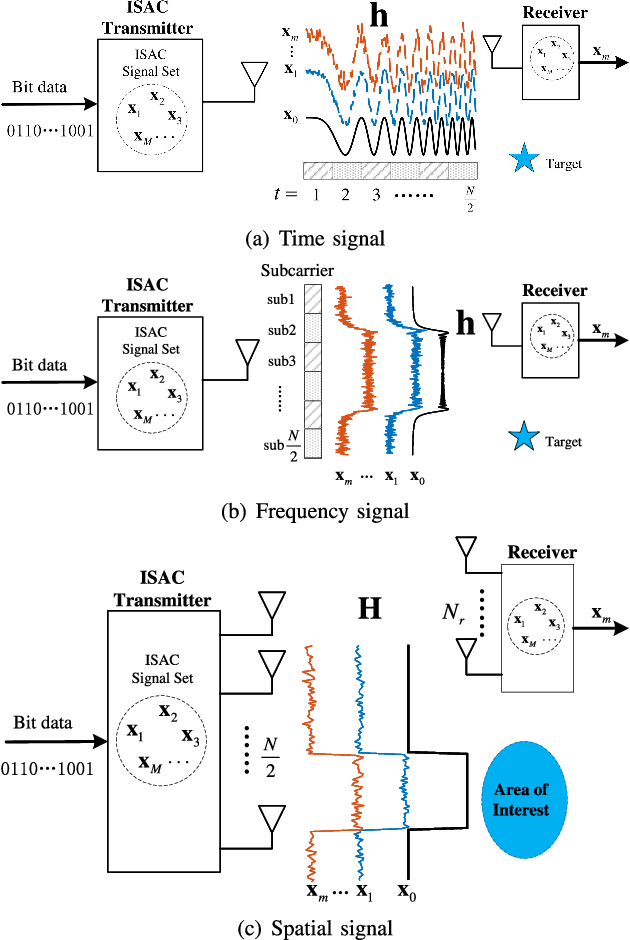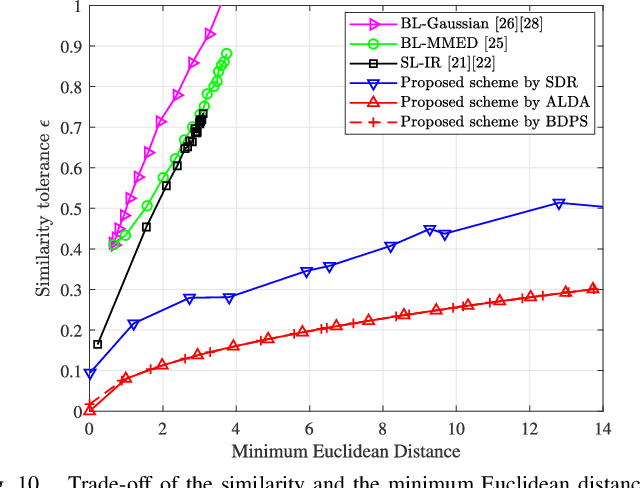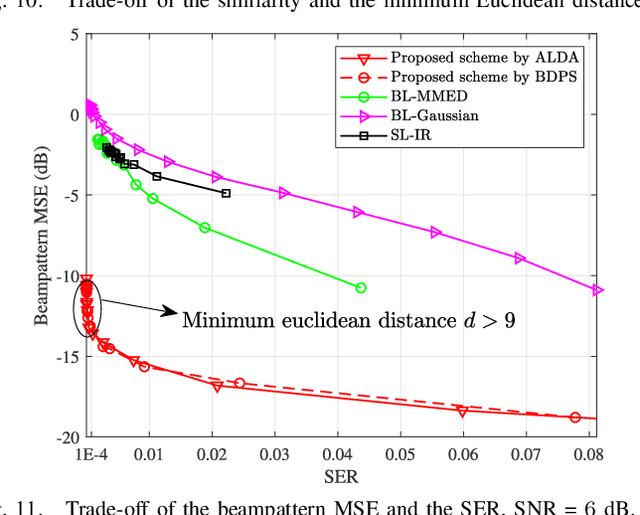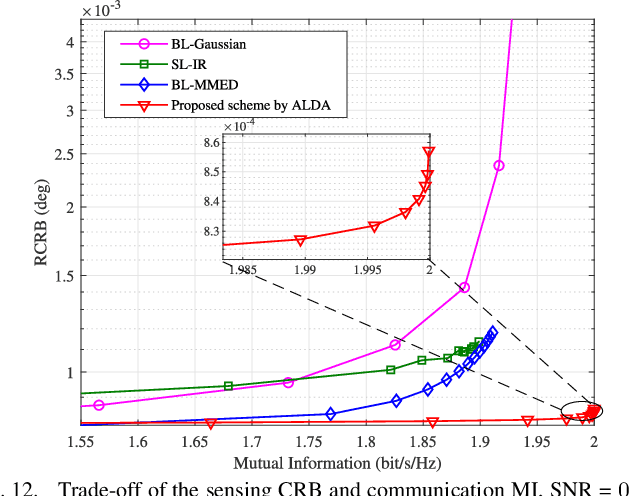Unified Integrated Sensing and Communication Signal Design: A Sphere Packing Perspective
Paper and Code
Mar 25, 2024



The design of communication signal sets is fundamentally a sphere packing problem. It aims to identify a set of M points in an N -dimensional space, with the objective of maximizing the separability of points that represent different bits.In contrast, signals used for sensing targets should ideally be asdeterministic as possible. This paper explores the inherent conflict and trade-off between communication and sensing when these functions are combined within the same signal set. We present a unified approach to signal design in the time, frequency, and space domains for integrated sensing and communication (ISAC), framing it as a modified sphere packing problem. Through adept formula manipulation, this problem is transformed into a large-scale quadratic constrained quadratic programming (QCQP) challenge. We propose an augmented Lagrangian and dual ascent (ALDA) algorithm for iterative problem-solving. The computational complexity of this approach is analyzed and found to be daunting for large, high-dimensional signal set designs. To address this, we introduce a bit-dimension-power splitting (BDPS) method. This method decomposes the large-scale QCQP into a series of smaller-scale problems that can be solved more efficiently and in parallel, significantly reducing the overall computational load. Extensive simulations have been conducted to validate the effectiveness of our proposed signal design methods in the context of ISAC.
 Add to Chrome
Add to Chrome Add to Firefox
Add to Firefox Add to Edge
Add to Edge